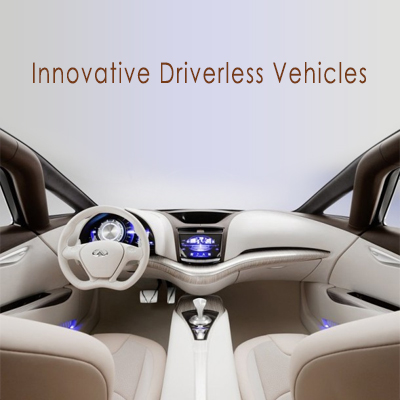The Role of Smart Wiring Systems in Modern Vehicles

Introduction:
Amidst the dynamic terrain of automotive technology, smart wiring systems have become indispensable, fundamentally transforming the conception, production, and operation of vehicles. This piece delves into the pivotal role played by smart wiring systems in contemporary vehicles, shedding light on their influence on safety, efficiency, and the holistic driving encounter.
1. Enhanced Connectivity:
In the contemporary automotive landscape, smart wiring systems function as the nervous system of modern vehicles, fostering seamless communication among diverse electronic components. These intricate networks of wiring and connectivity play a pivotal role in enhancing the overall connectivity within a vehicle, paving the way for the integration of advanced features that redefine the driving experience. Smart wiring facilitates the seamless integration of cutting-edge infotainment systems, ensuring that drivers and passengers can enjoy a range of entertainment options with ease.
Furthermore, these systems facilitate the smooth incorporation of GPS navigation, delivering precise and real-time location-based services. Additionally, smart wiring systems empower vehicles to effortlessly link with external devices, facilitating the assimilation of emerging technologies and ensuring that vehicles stay at the forefront of innovation in the swiftly evolving automotive realm. These strides in connectivity markedly enhance the functionality and sophistication of contemporary vehicles.
2. Improved Safety Standards:
The introduction of smart wiring systems marks the commencement of an era characterized by heightened safety standards in contemporary vehicles. These advanced systems assume a critical role in fortifying sophisticated safety features, making substantial contributions to accident prevention and the safeguarding of occupants. The seamless integration facilitated by smart wiring is particularly evident in the adoption of state-of-the-art safety technologies like collision avoidance systems. These systems utilize sensor data to identify potential hazards and proactively initiate preventive measures.
Furthermore, these systems allow for the incorporation of functionalities such as lane departure warnings and adaptive cruise control, enhancing the vehicle's dynamic response to its surroundings. In the realm of passive safety, intelligent wiring ensures the continuous functionality of essential components like airbags and anti-lock braking systems (ABS).
The intricate connectivity provided by smart wiring ensures that these safety features operate cohesively and effectively, contributing to a comprehensive safety ecosystem within the vehicle. Through their integral role in advanced safety features, smart wiring systems are pivotal in mitigating risks and elevating safety standards across the automotive industry.
3. Simplifying Diagnostic Processes:
Smart wiring systems have transformed diagnostic and troubleshooting procedures for mechanics and technicians, simplifying maintenance and repair workflows in contemporary vehicles. These advanced systems surpass conventional wiring setups by integrating intelligent features that facilitate self-monitoring and real-time issue identification. Mechanics can utilize the capabilities of smart wiring systems to swiftly and precisely diagnose potential problems, thereby markedly decreasing the time and effort typically required for troubleshooting.
The self-monitoring capabilities of these systems allow them to continuously assess the health of various electronic components, promptly flagging any anomalies or malfunctions. This real-time data not only expedites the identification of problems but also provides a comprehensive overview of the vehicle's condition. As a result, technicians can make informed decisions, leading to more efficient repairs and proactive maintenance strategies. Smart wiring systems, therefore, play a pivotal role in simplifying diagnostic processes, contributing to a more streamlined and effective approach to vehicle maintenance in the automotive industry.
4. Integration with Advanced Driver Assistance Systems (ADAS):
The integration of smart wiring systems with Advanced Driver Assistance Systems (ADAS) marks a transformative synergy, significantly elevating the safety and functionality of modern vehicles. These systems seamlessly facilitate the integration of advanced features within the ADAS framework, such as automatic emergency braking, blind-spot monitoring, and parking assistance.
Smart wiring serves as the backbone of these functionalities, enabling the smooth flow of data and communication between various sensors, cameras, and control units. By harnessing the capabilities of smart wiring, ADAS components can operate in unison, enhancing the accuracy and responsiveness of safety features.
For instance, the interconnected nature of smart wiring ensures that data from sensors, detecting potential collision risks or blind spots, is swiftly and accurately transmitted to the corresponding ADAS modules. This integration not only improves the precision of safety interventions but also contributes to the overall effectiveness of ADAS in preventing accidents and enhancing driver assistance. The collaborative relationship between smart wiring systems and ADAS exemplifies a pivotal advancement in automotive technology, ushering in a new era of intelligent and responsive driving experiences.
5. Energy Efficiency and Optimization:
Smart wiring systems play a central role in revolutionizing energy efficiency within vehicles, addressing the imperative need for sustainable and eco-friendly transportation solutions. By their intelligent design, these systems contribute significantly to the optimization of energy usage in both traditional and electric vehicles. In traditional vehicles, smart wiring facilitates the efficient management of power distribution, ensuring that electrical components operate at optimal levels. This streamlined approach results in reduced energy consumption, translating to improved fuel efficiency and reduced environmental impact.
In the realm of electric vehicles (EVs), smart wiring systems become instrumental in extending the vehicle's range. Through sophisticated power management and distribution, these systems maximize the utilization of electric power, allowing EVs to cover longer distances on a single charge. The intricate connectivity provided by smart wiring ensures that energy is allocated judiciously, minimizing wastage and enhancing the overall sustainability of electric mobility. Thus, the role of smart wiring systems in energy optimization represents a key enabler for the automotive industry's pursuit of greener and more energy-efficient transportation solutions.
6. Future-Proofing Vehicles:
Smart wiring systems are increasingly crucial for future-proofing vehicles, offering a flexible infrastructure that enables seamless adaptation to evolving technologies and dynamic industry trends. These systems are instrumental in ensuring vehicles can effortlessly integrate software updates and adopt new features without the necessity for extensive hardware modifications. Through the adoption of smart wiring, manufacturers establish a modular and scalable foundation, allowing for the incorporation of emerging technologies like advancements in connectivity, autonomous driving capabilities, and enhanced safety features.
The adaptability afforded by smart wiring empowers manufacturers to promptly address market demands and technological advancements, promoting a dynamic approach to vehicle development. This flexibility not only extends the longevity of vehicles concerning technology relevance but also simplifies the update process, rendering it more cost-effective and convenient for both manufacturers and consumers. Ultimately, smart wiring systems represent a strategic investment for automakers, playing a vital role in future-proofing vehicles within an industry marked by swift technological evolution.
7. Challenges and Solutions:
While smart wiring systems bring about significant advancements in automotive technology, they also pose challenges that necessitate careful consideration. One such challenge is the increased complexity introduced by these intricate systems, which may lead to challenges in installation, maintenance, and repairs. Additionally, the integration of smart wiring systems raises concerns about cybersecurity threats, as vehicles become increasingly connected. The risk of unauthorized access and potential cyber-attacks poses a substantial threat to the reliability and safety of smart wiring systems.
However, the automotive industry is actively addressing these challenges through the implementation of best practices and cutting-edge technologies. Industry leaders are investing in robust cybersecurity measures, including encryption protocols, secure access controls, and continuous monitoring systems. Moreover, advancements in artificial intelligence (AI) are being leveraged to detect and prevent cyber threats in real-time.
Standardization efforts and industry collaborations are also underway to establish guidelines and protocols for the secure implementation of smart wiring systems. By adopting a proactive stance towards these challenges, the automotive industry aims to ensure that smart wiring systems remain not only sophisticated but also resilient, secure, and reliable in the face of evolving technological landscapes and potential cybersecurity risks.
Conclusion:
In conclusion, the role of smart wiring systems in modern vehicles extends far beyond traditional wiring setups. From enhancing connectivity to improving safety and energy efficiency, these systems are pivotal in shaping the future of automotive technology. As the automotive industry continues to evolve, smart wiring systems will remain a key enabler of innovation, providing a foundation for the development of intelligent and connected vehicles.



